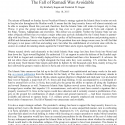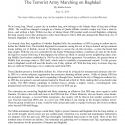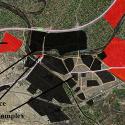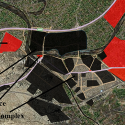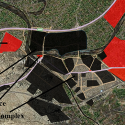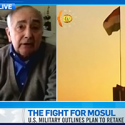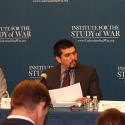Tracking ISIS Since (Before) the Islamic State
Aug 7, 2015 - John Lawrence
The ISIS Sanctuary Maps from the last 14 months (and longer) show how ISW has tracked the conflict and become the recognized expert on ISIS's expansion. As we approach the one-year anniversary of U.S. and coalition airstrikes against ISIS, we have collected all our Sanctuary Maps, along with examples of where they have appeared, to help show the role ISW is proud to have played in tracking ISIS.


